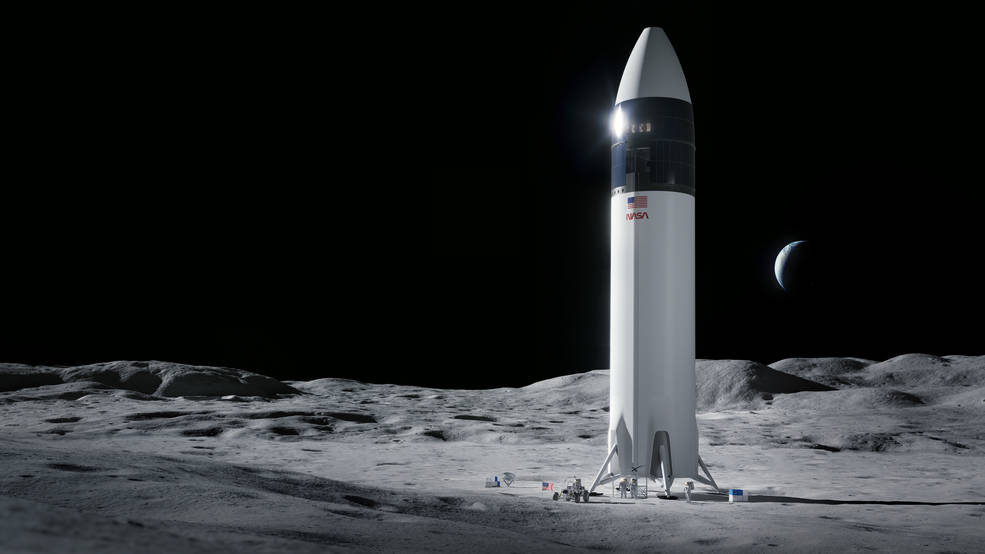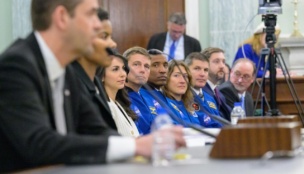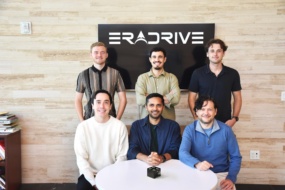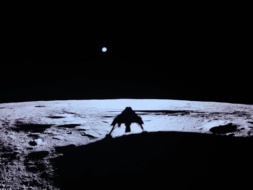In the latest round of lunar Human Landing Systems (HLS), we have a National Team 2.0—along with another group of bidders—vying to build a second vehicle that would take American astronauts to the Moon.
The big change? Blue and Northrop Grumman have parted ways in their bid.
How we got here: a brief timeline

- In April 2021, NASA awarded SpaceX a $2.9B fixed price contract to develop a human lander system. Blue Origin, which had partnered with primes for a competing HLS system, challenged the award in federal court (and lost in Nov. 2021).
- In March, NASA said it would solicit and award a second HLS contract in 2023. The new contract, known as Sustaining Lunar Development (SLD), came at the behest of Congress. Senators had called for two lunar landing programs, citing the need for more redundancy and competition.
- In November, NASA announced a $1.15B contract modification to SpaceX for a second crewed landing demo mission in 2027 with Starship. The landing will be a part of NASA’s Artemis IV mission.
Bidding for the SLD contract in question closed on Tuesday (Dec. 6).
The competitors
Blue Origin’s “National Team” consists of Lockheed Martin ($LMT), Draper, Boeing ($BA), Astrobotic, and Honeybee Robotics. Last time, the team was Blue, Lockheed, Northrop, and Draper.
In its new website, Blue emphasizes that the team’s network of partners and suppliers have a footprint across 48 states (Nebraska and North Dakota were the only two to not make the cut).
Leidos ($LDOS) subsidiary Dynetics partnered with Northrop ($NOC) on a second, competing bid. Notably, Dynetics also competed for the first HLS contract. The Leidos-led team has a unique take on the lander, with a low-set base and vertical solar arrays. See the latest concept below:
Northrop, meanwhile, brings pedigree to the table. It’s the only firm to successfully build a human lander. Back in the ’60s, Grumman Aircraft Engineering Corp. built all of the Apollo lander modules (Northrop and Grumman merged in 1994).
What’s next? Now, we wait and see. The winner will presumably fly a demo mission on Artemis V in the back half of this decade (or in the early 2030s) and will be eligible to compete for future Moon landing missions.




